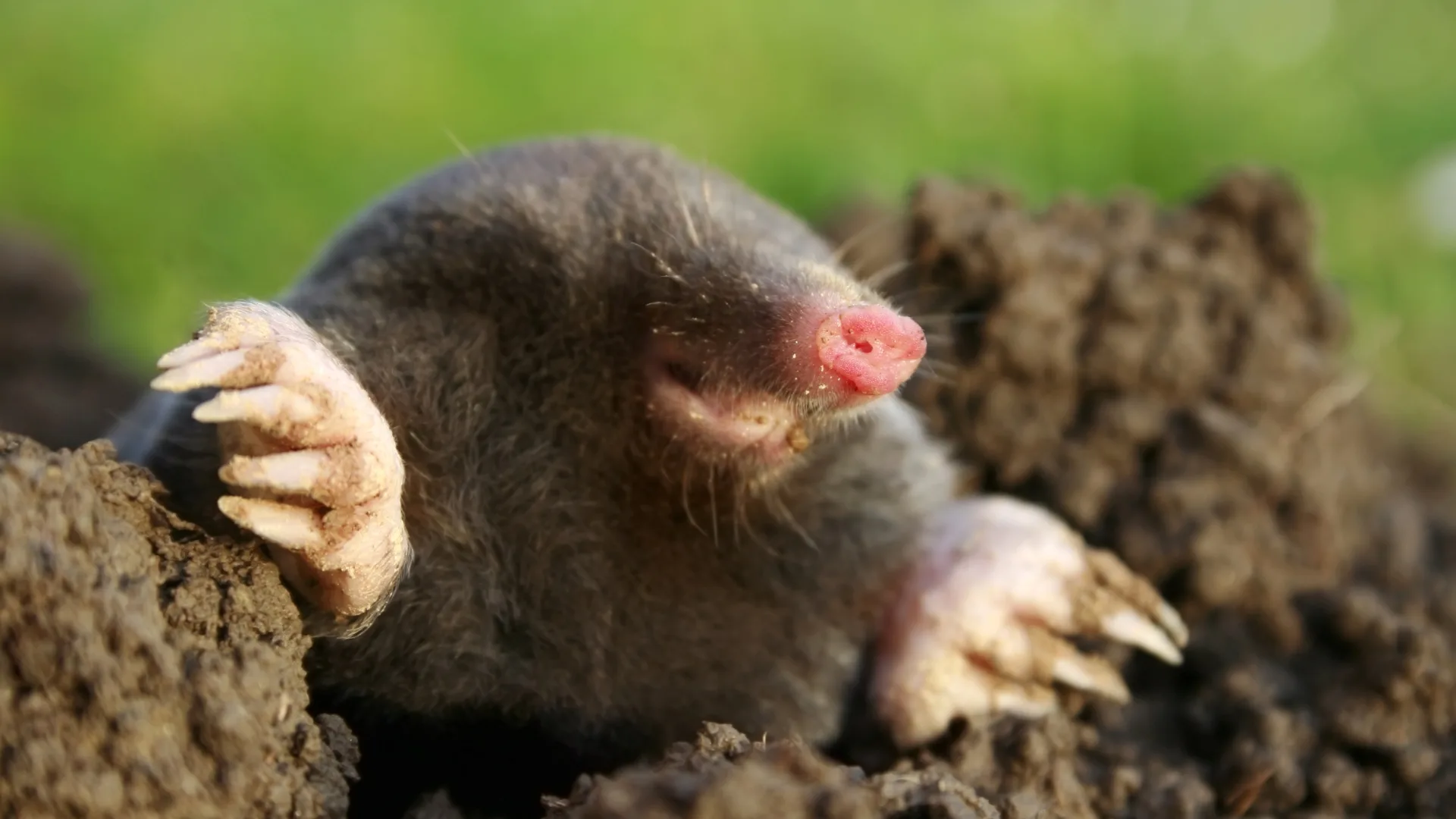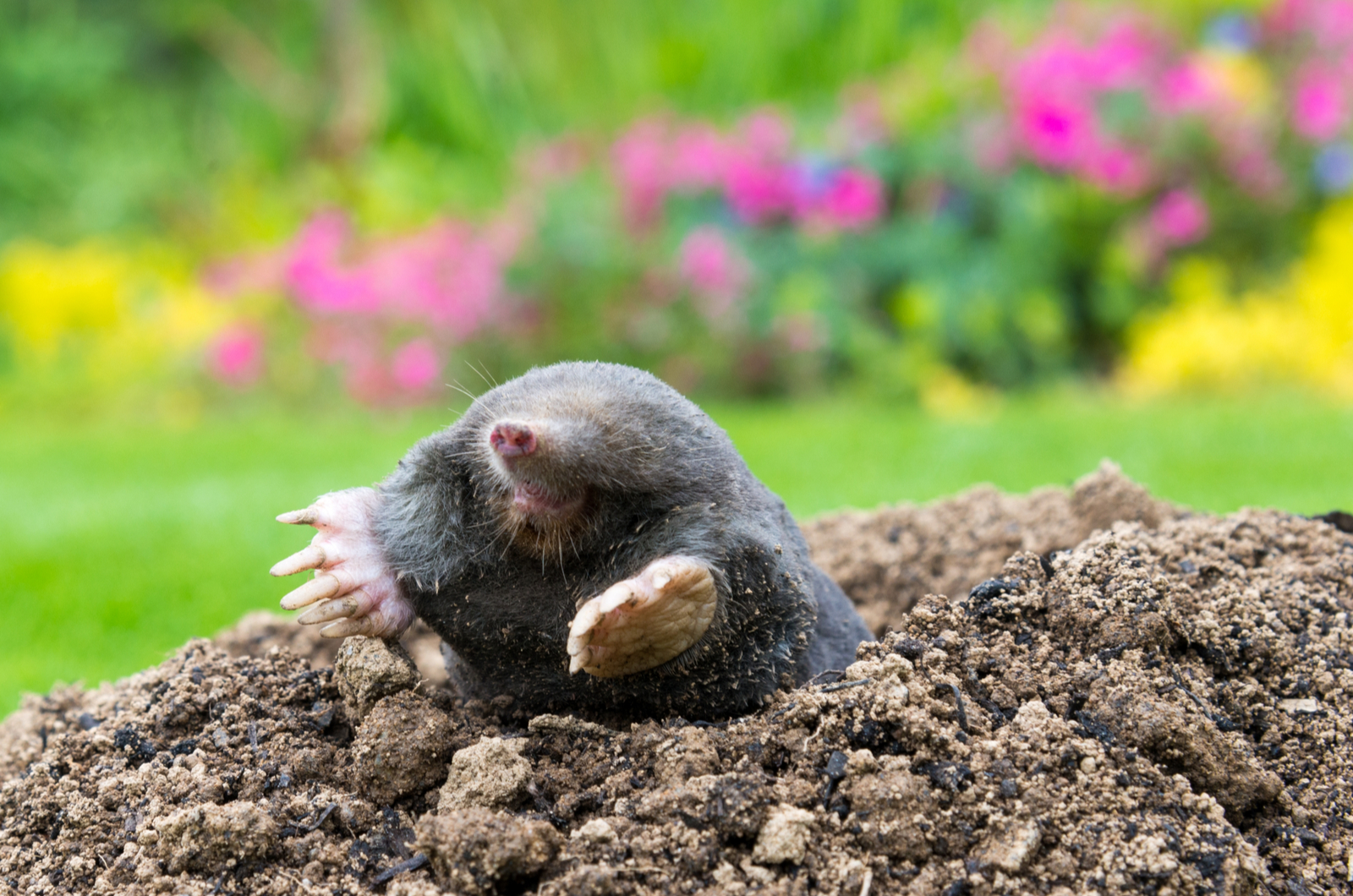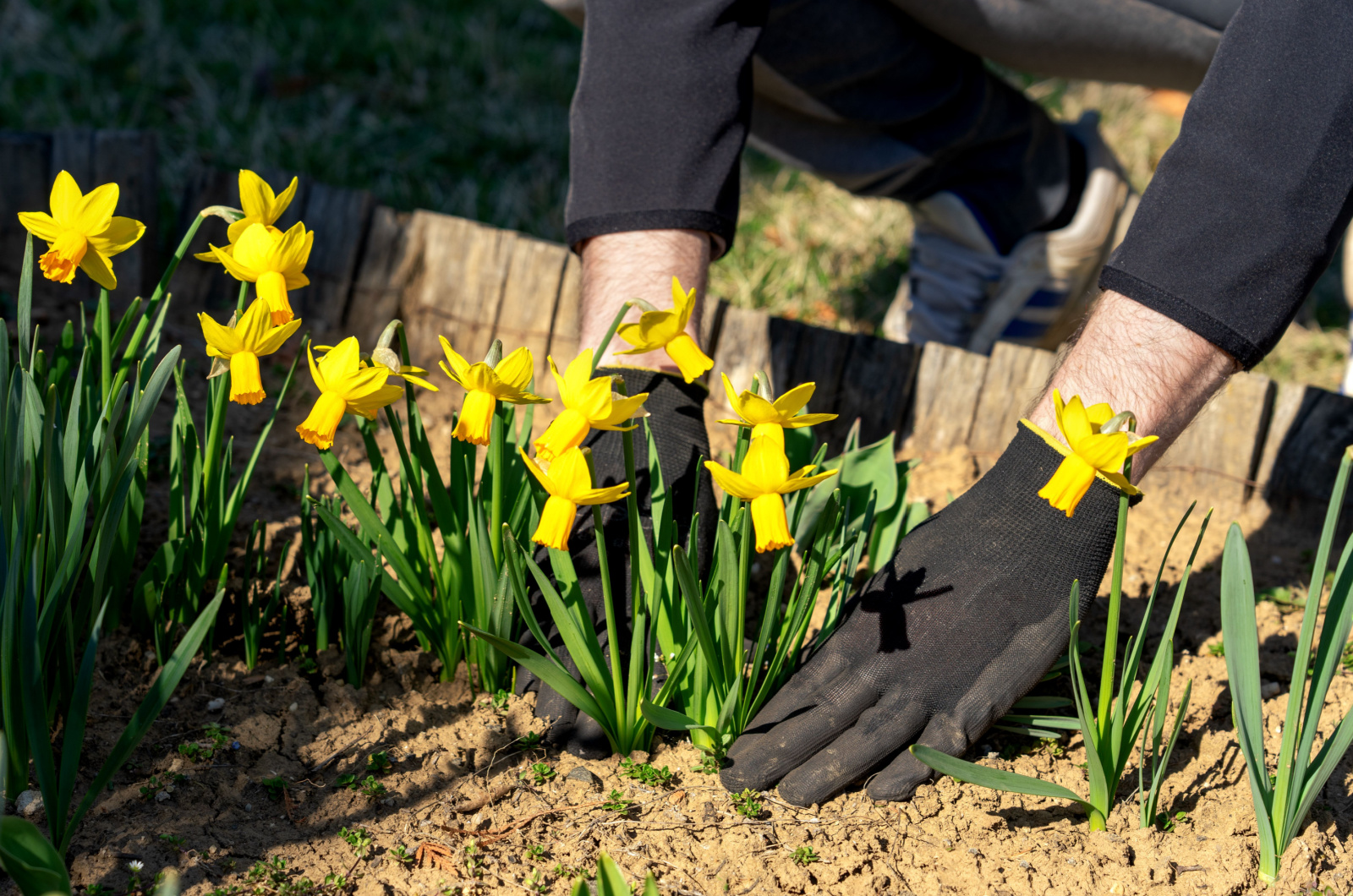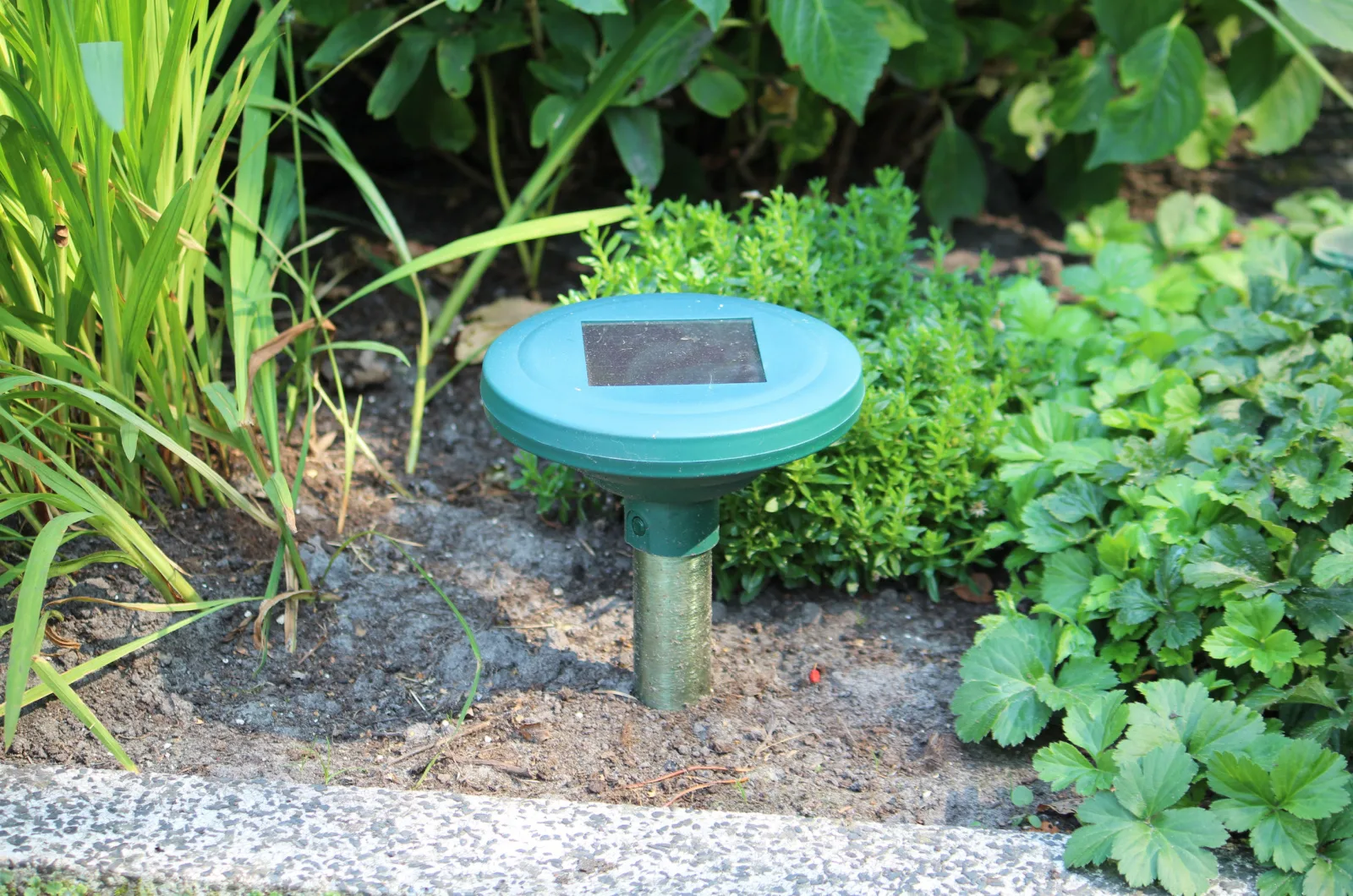I think moles are kinda cute – as long as they aren’t in my garden! No matter how many times I hear they aren’t dangerous, the havoc in my yard a few years ago means I simply can’t believe it.
They can destroy lawns and gardens, especially if they invite a few friends to come by. In order to protect your property, it’s important to repel these animals without harming them.
I’ll show you some of the best ways to deter moles and keep them at bay.
Let’s get started!
More About Moles
Even though many people think that moles are rodents, these animals actually belong to the family of Talpidae and are close cousins of shrews.
They’re small, furry, gray, have small eyes, and no external ears. Don’t let their size fool you; they have large paws and claws and they use them to burrow tunnels under the soil surface.
These mammals inhabit all regions of North America but they can also be found in Europe and Asia.
The favorite food of moles is earthworms and grubs, which are found in nutrient-rich soil types.
Why Deter Moles?
Moles actually have some advantages for our yards and may aerate the soil and get rid of grubs. However, the damage they do overrides these advantages.
If left untreated, these animals can dig tunnels so deep that they severely damage the surrounding infrastructure. Not to mention the hills they leave on our lawns.
Believe it or not, they can dig up to 18 feet in a single hour and pose a serious threat to in-ground infrastructure and the root systems of plants.
Additionally, they encourage weed development and the tunnels below the soil surface are perfect for mice and rats.
So yeah, it’s better to keep them at bay!
Signs Of Moles In Yard
Not every small hill means that you have moles in your garden. Here are the tell-tale signs of their presence.
1. If there are many raised ridges across your yard, you may be dealing with moles.
2. Yellow and brown patches on the grass may also appear.
3. Small holes can appear overnight and they’re typically surrounded by piles of soil.
4. The soil may feel too loose.
Ways To Deter Moles
Luckily, there are many ways to deter these animals and, most importantly, none will harm them.
Let’s see!
1. Use Castor Oil
Castor oil has many uses and you’ll often find it in beauty products. Well, now you can use it for the beauty of your yard.
The scent of this product is pretty odd and moles seem to hate it. These animals have poor vision but they have a perfect sense of smell and castor oil won’t go unnoticed.
You need to mix 3 parts castor oil with 3 parts water and 1 part dish soap. Pour the mixture into a spray bottle and apply the solution to all molehills in your property.
Continue applying for about 2 weeks until all these furry animals are gone.
Castor oil works perfectly for moles, which is why it’s used in many commercial mole repellents.
2. Apply Used Cat Litter
No one enjoys cleaning cat litter but I guess you’ll be more motivated if I tell you it will help you deter moles.
A friend of mine asked me if unused litter works for moles; well, cat urine is actually what deters moles.
All you need to do is take some litter and sprinkle it over all the mole trails. Additionally, sprinkle some litter at entry points.
The scent of a cat’s urine will trick moles into thinking that predators marked the territory, and they’ll leave your property.
3. Grow Mole-repellent Plants
My favorite way to deter not only moles but other common animals from the yard is by growing plants.
Moles have preferences regarding flowers and the two plants they hate most are daffodils and marigolds. Daffodils are actually toxic to these animals but don’t worry, they know that very well and won’t come near them.
Marigolds repel moles due to their pungent smell.
Alliums, such as onions and garlic, also deter moles, as well as herbs such as basil and rosemary.
Well, castor beans work perfectly but you should be cautious with these plants because they contain toxic substances that may harm children and pets. (1)
4. Water Your Lawn Less Frequently
A lush and green lawn is every yard owner’s dream and watering is one of the most important aspects of lawn care.
Moles enjoy moisture because it makes it easier for them to dig tunnels to look for food. First, you should fix all drainage issues on your property.
Then create an artificial drought, i.e., delay watering your lawn for a couple of weeks. Moles won’t like it and will most probably leave your property.
5. Remove All Food Sources
As mentioned, these small mammals primarily feed on earworms and grubs, which is why they won’t leave your yard.
Since worms are beneficial to our gardens, you should decrease the number of grubs. Milky spores can help you with this issue. When applied to grass, this natural fungus remains in the soil and destroys grubs one by one.
If you like, you can also decrease the worm population by attracting more birds to your yard; feeders and bird baths are the way to go.
6. Use Ultrasonic Repellents
This method seems a bit odd, I mean, moles don’t have external ears but surprisingly have a good sense of hearing.
They’re especially sensitive to vibrations and that’s why they prefer ‘quiet gardens’. Ultrasonic repellents to the rescue!
Put the device in the soil, leaving the top above the soil surface to allow the sun to reach the solar panel. The spikes of this device will emit electronic pulses to deter any mole in the ground.
How To Stop Moles From Entering Your Yard Once And For All
The methods above undoubtedly work but if you’re still seeing a couple of moles in your yard, there’s a definite solution.
All you need to do is dig 2 foot deep and 6 inch wide trenches around spots where you don’t want moles. Then cover the trenches with chicken wire, add some rocks, and that’s it! Yes, this method is labor intensive but you will definitely wave goodbye to moles!
References
1. Al-Tamimi, F. A., & Hegazi, A. E. (2008). A case of castor bean poisoning. Sultan Qaboos University medical journal





